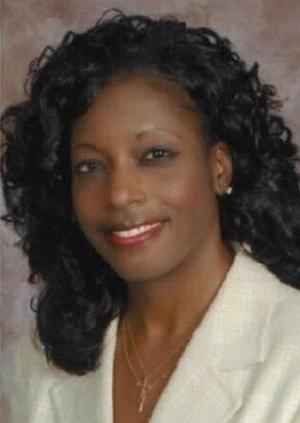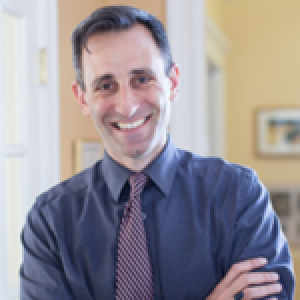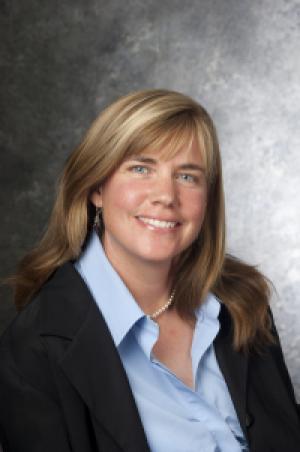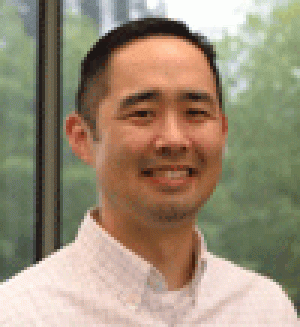Resources

Growing up, one of my all-time favorite TV cartoons was Quickdraw McGraw and his faithful companion, Babalooi (does that date me?). Do you remember it? Quickdraw was the noble but naive, quick-on-the-trigger sheriff who fought off wicked desperados who inevitably found their way into his small, quiet prairie town. Sheriff Quickdraw’s first attempt at stopping a criminal type was to cry out, “Cease and desist!” Of course, it never worked. What hardened criminal would desist bad behavior just because you tell them to? Which brings up the question, when learners misbehave, how do you get them to desist without disrupting the learning process? While those of us who teach graduate level courses rarely have classroom management problems as those in undergraduate and lower grades, when they do happen, they can derail the learning experience. I once had to dismiss an adjunct in a graduate course mid-semester due to her poor handling of classroom management issues, mostly due to her inexperience. Because she was not able to get her classroom under control early by providing effective interventions (desists), things just got worse, to the point that the situation became unsalvageable. Fortunately, there are effective ways for a teacher to say “Cease and desist” to stop off-task behavior and get learning back on track. A teacher who knows how to stop class disruption before it spreads not only stops the deviancy, but at the same time has a positive effect on other learners in the class. A desist is an action the teacher makes to stop off-task learner behavior. The trick of course, is to use desists which not only stop unwanted behavior but will not also distract the other learners in the class. For example, if a teacher uses angry, punitive desists, then the acting out learner may stop his or her misconduct, but the ripple effect on the other learners will cause an increase in emotional anxiety which disrupts learning, and possibly causes additional unwanted disruptive behavior. An effective teacher gives attention to the quality of desist, those characteristics of teacher behavior used to stop disruptive learner conduct. Quality of desist has three indicators: Clarity, Roughness, Task-Force, and Approval-Focus. Clarity of Desist. Clarity refers to behavior on your part that specifies who the acting-out learner is, what he or she is doing wrong, and why this is improper behavior or what the proper behavior is. Roughness of Desist. Roughness refers to the way an attempt to stop misbehavior expresses impatience and anger, or ways the teacher's facial or bodily behavior expresses anger. Task-Force Desist. The task-force desist refers to ways you direct learners to the task at hand as the desist is given. Major Deviance Desist. In this teacher behavior, the teacher selects the major disruption when two or more deviancies occur simultaneously. The rule is to focus on the major disruption and ignore the lesser. Correct Target Desist. In this behavior, the teacher desists the learner who caused the disruption, not a bystander. Approval-Focus Desist. In this student-affirming teacher action, you make a statement that implies your warmth toward and feeling for the learners. This type of desist loses its effectiveness after about the third grade. Research in classroom management indicates that: Soft reprimands are more effective in controlling disruptive behavior than loud reprimands, and that when soft reprimands are used, fewer are needed Learners who witnessed a punitive or angry desist responded with more behavior disruption than when they observed a desist without roughness Task-focused desists resulted in more favorable ripple effect on the conduct of learners than the approval-focus desists When a simple reprimand was observed, learners felt the teacher was fairest and able to maintain control. Learning effective desist techniques is one of the most valuable skills a teacher can master. A teacher who can minimize time spend on classroom and behavior management will increase the time he or she has for actual teaching and instruction. One study found that teachers trained in specific management behaviors, including the use of positive questioning techniques and soft reprimands/desists, decreased the amount of non-instructional time by 20 minutes per day! SOURCES: Becker, W.C. et al. Production and elimination of disruptive classroom behavior by systematically varying teachers’ behavior. Journal of Applied Behavior Analysis (1968) 1:35-45. Borg, W.R. et al. Teacher classroom management skills and pupil behavior. Journal of Experimental Education (1975) 44:52-58. Emmer, E.T., et al. Effective Classroom Management at the Beginning of the School Year. Elementary School Journal (1980) 80: 219-231. Kounin, J.S. Discipline and Group Management in Classrooms. New York: Holt, Rinehart and Winston (1970).

“Spiritual Companioning for Ministry” is a course I recently taught for the first time for a colleague when she took a well-deserved sabbatical. She shared her syllabus and course plan with me and told me that she usually taught it to about 12 students which worked well for the topic. A couple of weeks ahead of the semester, I realized that I was going to have to make some major changes fast; close to 40 students had registered. The class involves a lot of sharing, often around intense topics, in order to become skilled in responding to the issues that surface when companioning others on their spiritual journey. I needed to design a way for so many students to have the ability to engage the texts as well as form a confidential and trusting learning community for the many discussions of this course. The key was to build effective small groups, which we called learning teams. Because Catholic Theological Union has students from around the world we used part of the first class to divide students into learning teams that allowed for diverse voices in each group. During that first class, we also discussed small group dynamics and the learning teams were invited to develop “ground rules” or covenants they wanted to keep with one another. (Examples of covenant points include confidentiality, cell phone use, planned facilitators etc.) The learning teams soon became the cornerstone of the class. They provided a rich framework for practical experience and integration of course material. Community within each learning team was fostered in a number of ways: The classroom was rearranged so that each learning team had a table to sit around. Tables were spaced so that intimate conversations could take place and other groups were not too close. This physical arrangement set the tone for the atmosphere I was hoping to foster in the class. Each session included discussions within learning teams. Discussion prompts might have been for groups of two or three or discussions for six, but students were always in discussions with someone from their learning team. This allowed for a mix in the types of discussion but kept discussions within the learning teams to build relationships throughout the semester. Each class began with a reading assessment where learning teams would discuss the readings and work through an assignment of questions or activities about the readings. This encouraged each student to stay on top of the readings, as their small group would expect their participation in these weekly conversations. Students completed “noticing journals” on our online D2L course management system. They were asked to post brief responses to prompts such as “Discuss a time this week you talked with someone about prayer” or “Discuss a time this week you noticed someone talking about or discerning a decision.” These posts would be read and responded to by learning team members online. One of the gifts of the online discussions was that students who were more hesitant to participate in the larger class setting had an easier time participating in the online forum. Throughout the semester, the worksheets on the readings, the noticing prompts, and in class discussions were more involved. Students engaged one another on progressively deeper levels. I spent less time engaging them in a large group but floated around the room checking in on their discussions, answering questions, and making notes for the next class’ lecture based on what I was noticing in the teams. During the semester, several students experienced serious illness or a death of a beloved family member. The learning teams provided an intimate hands-on forum for spiritually companioning one another in a way that the larger classroom could not have handled. On the last day, I brought in “talking pieces” that represented various discussions from the semester and invited students to “end well.” Learning teams were encouraged to select a talking piece and give each person in their group a challenge, a commendation, and a blessing. The learning teams took their time with this session; some continued well beyond the allotted class time. The sharing was deeply emotional and confirmed that learning teams within a large class provided the framework that modeled and built companionship in a profound way.

How do theological educators help students face the constant reality of failure? Picture this scenario: a second career divinity student suffers health and financial troubles that impede her studies. The impact of these issues revives past psychological wounds. Enduring this morass of difficulties leads to the student’s failure in several class assignments. Further, the weight of the unresolved emotional burdens, partly resurrected through themes in classwork, results in crippling pessimism, angst, and depression. The student begins to conclude that dropping out of school is the only solution despite the negative ramifications this decision will have on her career goals. What are the pedagogical possibilities for instructors and students with regard to issues of failure both in and out of the classroom? In addition to keeping students aware of campus and local health resources that accommodate various needs (including psychological and counseling services, for instance) instructors can develop a helpful methodological ethos around success and failure in the classroom. As the prophet Jeremiah testified, “You shall say to them, ‘Thus says the Lord: When people fall, do they not get up again? If they go astray, do they not turn back?’” (Jer. 8. 4) Pedagogical strategies for encouraging students to confront and overcome failure begin with instructors modeling a lack of fear in this regard. Teachers are not perfect. Nor are lectures, teaching plans, or classroom activities executed perfectly at all times. Responding to hiccups in real time classroom settings indicates there is a way back from past failures as well as traumas that may be at the root of student underperformance. This models effective coping strategies for students. Further, it is helpful to assist students to find ways of processing how the legacy of trauma, both collective and personal, affects learning. Part of the impact of trauma is the defensive posturing in individuals and societies that tends to obscure the origins or initial events that contributed to experiences of upheaval. Theological education, which assists in the dissemination of epistemologies based in critical inquiry, enables students to interrogate traditional and received interpretations, even if, in some cases, only to validate them. Just as the use of critical inquiry in coursework can provide opportunities for facing themes and opening pathways related to trauma in social experience, so can pedagogical strategies, structured in this framework, hone methodological skills of survival and success for students. Developing opportunities for students to enact these strategies also enables instructors to assess the usefulness of particular methods and modes of presentation. The familiar mantra, “If at first you don’t succeed, try, try again,” was originally written to encourage students in the educational process. Indeed, teachers can develop specific strategies to help students face problems in classroom performance. These include not only acknowledging difficulties when they arise but also incorporating tactics that analyze obstacles in classroom exercises. For example, tracing patterns or connections, dissecting complications, wrestling with incongruities, working through potential solutions, and testing their implications in classroom exercises model the confrontation skills necessary for overcoming failure. Built on the paradigm of evaluation, critique, and re-evaluation, such teaching methods can help develop the kinds of students who encounter defeat, yet refuse to fail.

It was my first semester teaching about 10 years ago in a seminary. Our class of about 35 students was into the second week of the semester and I was speaking about the complicity of the United States in the attack of 9/11. In the midst of my talk a student raised his hand and I asked him to speak. He proceeded to offend me in many ways: telling me I was not from this country and that I shouldn’t be in the US, much less teaching. After he was done, I was possessed by an anger that took away my ability to think. In the midst of it all I remembered that I was wearing a microphone so a student with impaired hearing could listen to my talk. I then went to the back of the class and asked the student to speak again into the microphone so the other student could hear. It was during this movement from the front to the back of the classroom that I gained some clarity. I got very close to him so he could use the microphone that was on my chest and I said, “Can you please say it all again so Mary can hear what you said?” I was so close to him I could feel his breathing. He was so surprised that he started stuttering and said only 20% of what he said the first time. And then we had to continue the class. We became opponents of each other and it was a very strange, fearful, and awkward semester. The current political atmosphere in this country is one made of confrontation. We address each other with the goal to win the battle, and in some or many ways, to annihilate the opponent. There is a certain pleasure not only in winning an argument but in depriving somebody from their own joys. Many polarities in our society are based on the assumption that these important issues can preserve or eliminate the very possibility of life. Whites see minorities as a threat to their social position, and even their lives; minorities see whites as owning a privilege and control of things-supremacy- that impedes them from living fully and even existing; heterosexuals see queer people as a threat to the nuclear family, ‘normal’ social composition and God’s design; queer folks see these heterosexuals not only limiting their social rights, but also endangering their very lives. Be it race and ethnicity, economics and class, sexuality and gender, we seem to locate ourselves in opposition and from those places we fight for our very lives. Classrooms are not exempt. Teachers and students come from the corners of those sides and may reproduce in class the same divisions experienced in society. Readings become ideological brainwashing, free speech is endangered on both sides, and taking a position offends someone. The results can be disastrous. It is not difficult to foresee uneven power discussions becoming a screaming contest with the aim being to wound the opponent. But also, there are discussions that produce silent harm in their aftermath. A friend of mine told me that her president asked faculty for ways to help her school to improve in terms of diversity. When my friend, somewhat naively, pointed out some aspects of the institution and its life that were alienating for minority persons, the discussion in the meeting skirted the issues she had raised and failed to recognize the problems. The next year, my friend didn’t get tenure because the president had felt personally offended in that meeting and said he couldn’t trust her anymore. In a culture that often does not know how to deal with conflict, where offense and injury are seemingly inevitable when we discuss difference and litigation is the only vocabulary we know to solve disputes, how do we model a culture of mutual appreciation and begin to create spaces where people can speak what they need to and, at the same time, be challenged regarding what they say? Marcia Y. Riggs in her article “Loves the Spirit”: Transformative Mediation as Pedagogical Practice,[1] gives us wonderful tools to create a space where dialogue is fostered instead of debate. She says: “The concept of dialogue is critical to intercultural communication because it is more than simply conversation; it is communication that nurtures relationship. This is the case because dialogue is based upon mutual respect and listening and learning from one another over time; “earning such respect comes through a willingness to accept the ‘other-ness’ of others.”[2] Dialogue creates a possibility for many voices to contribute, but debate opposes one person over another. Surely, we can’t go into dialogue with the naïve feeling that we need to be nice to one another. Surely we can’t be unaware of the power dynamics and tensions always present in organizations and schools. Fearful sentimentalities when pronounced through pedagogies formed out of the fear of conflicts easily succumbs to other fears lurking in the space and end up avoiding the very issues that we are supposed to discuss. The same thing happens with “safe” pedagogies that tend to create safe/artificial spaces where people only speak what is “non-threatening” and the very issues at stake continue in a latent mode. We need pedagogies of courage that help us confront each other fully by creating forms of trust and recognition, offering tools and programs that do not work from fear and don’t aim at simply checking the proper list of mutual respects. Just recently I was in a classroom in my seminary where my colleague who teaches a difficult class allowed students to ask, talk, and make mistakes, fundamentally practicing honesty. Fiery conversations with fiercely made arguments can be just as fine to engage if what is at stake is an idea and not the dignity of a person, or a people. Surely ideas can put people’s dignity under attack, and it can be tricky sometimes to distinguish between “mere ideas” and the dignity of a person. Especially in some subject areas. However, it is the practicing of pedagogies of courage that gives us the awareness to feel, listen and speak, or see, judge, and act. We must learn to live in rough planes of uneven ideas, disjointed and opposed worldviews and stay there, breathing within our differences with the intent of, perhaps, mutual relations. A very difficult task. As I write this article I wonder what I would do if someone like that student of mine, who must surely be against the Deferred Action for Childhood Arrivals (DACA) program, would come to my class again. The extinguishing of this program has deeply affected me. Now that I have tenure in a very liberal institution and have a better sense of myself, would I have patience with this student? Would I be able to create a space where this student could thrive as much as he would be challenged and respected? I don’t know . . . . My ethicist friend asks me: What is teaching for? What can happen in the classroom that is important, that expands the world for students, and for us as teachers? How can we create classroom communities that practice justice in the same ways that we want our larger community (neighborhood, city, country) to be more just? Perhaps we can try to think about our opponents not as people to be thrown away or put down (how different would I be from my very opponent who wants the same?) but rather, as part of my own wellbeing. I cannot allow myself to be reduced to my opponent in regard to their ideas and propositions. But I must know that we are made of the same human material, the same vices, horrors, joys and honors, the same desires to destroy and to build. To acknowledge the humanity in those whom I can easily despise and would enjoy seeing their demise, is the first step into this space of some commonality. For those with some power, it is getting closer that empowers us rather than running away. My people made me strong to face our enemies and I am with them for them. Without fear! I simply don’t have the possibility to run away! I must face them while I don’t need to eliminate them! While I can’t stand the president of the United States and all that his administration is doing, I cannot just say, “Well, his term will end soon.” While he is a threat to the very condition of life for my people, all the minorities, and the earth, I can’t demonize him! I can’t demonize him even after I read Ta-Nehisi Coates' essay "The First White President"[3] and his sharp while contestable, yet fundamental analysis of what the president represents. I can’t dehumanize him even though I have enough content and rhetoric to do it easily. I cannot allow his white resentment and grievance to make me work from my own resentment and grievance. I am not spending time dealing with an anger he wants me to feel, thus preempting my criticism and action and defusing my strength. I will engage in other forms of feeling that he does not expect. I will move closer to him and I will breathe next to him a different breath! Until he moves or is moved away! In fact, he is teaching me so many things and challenging me to think in ways I had not done before. In this way, he is actually making me feel stronger to contest him and his administration in more thorough and unforeseen ways. The weirdest thing: he is empowering me with opposite signs! I don’t want to destroy him! I once heard Professor Orlando Espin say this: “You cannot free somebody by dismissing and destroying someone else.”[4] So I won’t do it! But if you ask me, “Can you fight this man and his administration?” I will say it out loud. “Oh yes! Oh yes, I can!” In the words of Dietrich Bonhoeffer, recently remembered by Rev. Dr. Serene Jones and Rev. Dr. Kelly Brown Douglas:[5]“We are not to simply bandage the wounds of victims beneath the wheels of injustice, we are to drive a spoke into the wheel itself.” In order to drive a spoke into the wheel we need to get closer, even very close, to our enemies and listen to them. That is what that microphone in my neck taught me. I got closer to my student and he changed. As I also changed. It is from this closer place that we gain our strength and we are able to see somebody else’s humanity. From that place we listen, agitate, contest; we confront and radically change things and people. Perhaps the Buddhist monk Thich Nhat Hanh, who coined the term “socially engaged Buddhism” can help us see us in a multitude of places, names, and situations. He helps us name all of our names: Please Call Me by My True Names Don't say that I will depart tomorrow— even today I am still arriving. Look deeply: every second I am arriving to be a bud on a Spring branch, to be a tiny bird, with still-fragile wings, learning to sing in my new nest, to be a caterpillar in the heart of a flower, to be a jewel hiding itself in a stone. I still arrive, in order to laugh and to cry, to fear and to hope. The rhythm of my heart is the birth and death of all that is alive. I am a mayfly metamorphosing on the surface of the river. And I am the bird that swoops down to swallow the mayfly. I am a frog swimming happily in the clear water of a pond. And I am the grass-snake that silently feeds itself on the frog. I am the child in Uganda, all skin and bones, my legs as thin a bamboo sticks. And I am the arms merchant, selling deadly weapons to Uganda. I am the twelve-year-old girl, refugee on a small boat, who throws herself into the ocean after being raped by a sea pirate. And I am the pirate, my heart not yet capable of seeing and loving. I am a member of the politburo, with plenty of power in my hands. And I am the man who has to pay his "debt of blood" to, my people, dying slowly in a forced labor camp. My joy is like Spring, so warm it makes flowers bloom all over the Earth. My pain is like a river of tears, so vast it fills the four oceans. Please call me by my true names, so I can hear all my cries and laughter at once, so I can see that my joy and pain are one. Please call me by my true names, so I can wake up and the door of my heart could be left open, the door of compassion. [1]Riggs, Marcia Y., ““Loves the Spirit”: Transformative Mediation as Pedagogical Practice,” 2016 111 E. Ott Marshall (ed.), Conflict Transformation and Religion, DOI 10.1057/978-1-137-56840-3_8 [2] Ibid, 113. [3] Ta-Nehisi Coates, The First White President. The foundation of Donald Trump’s presidency is the negation of Barack Obama’s legacy. https://www.theatlantic.com/magazine/archive/2017/10/the-first-white-president-ta-nehisi-coates/537909/?utm_source=fbb [4] Dr. Espin also emphasizes that “among unequal people, if to make victims free from bondage requires to hurt the dominant abusive dictatorial oppressor, I don’t have ethical problems with that.” [5]We Condemn President Trump’s DACA Betrayal, https://utsnyc.edu/condemn-president-trumps-daca-betrayal/

I help people have difficult conversations for a living. I facilitate dialogues–usually in communities deeply divided over issues that touch on people’s values and worldviews. I have spent much of the last three years working with professors as their classrooms increasingly fit that description. In Jill's terms, I help people wobble, but not fall down. Jill talks about wobble in terms of letting something happen and getting out of the way. That is a piece of it for sure, but there is a choreography to wobble, a delicate but purposeful crafting of space, time, language, movement, and furniture that makes wobble possible. The purpose is to break people out of the conversations that hold us back from seeing complexity in ourselves and others. It is meant to crack the surface conversation to reveal new possibilities, to deepen understandings of values and lived experience, and to unmask our own assumptions. I call it “choreography” because every choice we make while facilitating a conversation invites some responses and discourages others. And every choice we make leads people to focus either on us or on each other. If we call on people, it invites people to raise their hands and wait for us to conduct. If we don’t, it invites people to give and yield focus as they move in and out of the conversational space. It is choreography at its most subtle. If we ask people to sit quietly and reflect for two minutes before answering, we invite the second and third thought that someone has, not just the first. The work of dialogue is disruptive of old patterns. It disrupts dynamics of dominant voices monopolizing the space–including ours. It weakens the power of the first speaker. It breaks the pattern of asking questions we already know the answer to while our students try to read our minds. It invites silence as a space of intention and reflection rather than of fear and disengagement. It invites empathy rather than judgement. It prompts uncertainty rather than certainty and curiosity rather than declamation. It allows for wobble rather than steady motion along the straight and narrow. When I visited Jill’s class, I stood up and talked about dialogue in front of rows of chairs, with people raising their hands and I called on them–ironic. It was a fine conversation. But when I sat down to watch the rest of the class, Jill didn’t just allow or encourage wobble, she choreographed it. Jill asked the students to move the chairs into pairs of arcs facing each other. A wobble happened. Then Jill sat outside the circle. Another wobble. Outside the circle is one of those places that disrupts the old pattern, a place of intellectual humility. It disrupts the pattern of students relying on us for the prompt, the answer, the nod of approval. Then she asked a question she didn’t know the answer to. Wobble. She gave people a chance to reflect before speaking. Wobble. This is not just allowing something to happen; these are a set of choices we make–a choreography that when done right makes possible a new kind of conversation that breaks the dominant polarized and divisive rhetoric or silencing that we see so often in our discourse. What happens when we choreograph wobble is that students rise to their own power and possibility, and move through their own wobbling moments to muster the momentum to move together. In Jill’s class, the conversation had to be interrupted after 40 minutes to announce something about papers, but it would have gone on. Even if Jill and I had quietly snuck out of the room, it would have gone on because the students had turned toward each other and engaged. Whether we recognize it or not, much of our public discourse is designed for simple, polarizing, escalating episodes of attacking and defending well-worn positions. We have opportunities to design and incubate a new discourse, one designed for the generation of ideas, the exploration of new ground, the contemplation of complexity. The patterns we have to break are strong and so our choices must reflect that. Our choreography must reflect the need of this moment; the need to turn to one another with curiosity, complexity, and care.

I am a cyclist. I ride a hybrid commuter bike to work most days and have a road bike that has taken me up mountain passes and on to country roads outside of Dallas where views of fields and livestock replace the asphalt jungles of the Metroplex. I picked up cycling almost a decade ago when it became clear that I needed some kind of response to the combined stresses of pre-tenure professional life and young children at home. I got on the bike for outside time, physical challenge, and personal space. I’ve stayed on the bike for all of these reasons, and also for what time on the bike has taught me about attentiveness, mindfulness, thinking spaces, and more recently, about wobble: those moments when things slow down, or haven’t quite started up; when direction, volition, and commitment are in play. In cycling, wobble happens when mounting, dismounting or moving slower than 2 miles per hour, often during a turn. As things go, this is also when it happens in classrooms. When conversations aren’t strictly guided, when listening replaces lecture, when a set authority structure is open to flux, intellectual patterns can come a little out of balance and preconceived ideas can change. Put another way, transformative learning can occur. Without the wobble, feet firmly on the ground, we can never get on the bike and ride. My interest in wobble stems from some conversations about diversity and intellectual humility I’ve been having with colleagues from various places and disciplines, and also from a recent workshop for faculty and graduate students here at Southern Methodist University on conflict and conversation in religious studies classroom spaces (thanks to Wabash for funding this with a small grant). The workshop focused on understanding why contentious issues can be difficult to talk about, and also offered concrete methods for facilitating useful conversations across difference. John Sarrouf, an experienced facilitator and Director of Strategic Partnerships at Essential Partners, led that workshop for us. John was also kind enough to come and speak to my undergraduate class about the work he does. It was in that encounter that I saw wobble in action. John greeted the class and then asked if they were talking about the upcoming presidential election. My otherwise talkative, engaged, and engaging students shrunk at the very suggestion. Shoulders hunched, faces turned to their desks, they shook their heads. They were thrown off balance, visibly uncomfortable, almost at a standstill. Then, John asked what it would take to be able to have those conversations. Under what conditions could they speak? Their heads came up, they made thoughtful suggestions, and by the end of John’s 10 minute time, they had recalled productive discussions around Black Lives Matter, religious differences, and their experiences in our class. They had turned an intellectual corner and were up and riding (thinking) again. In an online discussion post that followed, one student mentioned a change in his thinking in response to a suggestion John made about talking to understand rather than to persuade. Something in the wobble allowed him to hear, consider, and embrace a suggestion. He learned something. As in mounting and dismounting a bicycle, the wobble needs to be controlled. Too much and forward momentum turns into a crash, too little and we never get that second foot off the ground. Now that I am attentive to wobble, though, and have learned to use it by letting silence happen in discussions — by getting mindfully out of the way, or by not shying away from controversy when it arises — I have come to recognize its real potential. Or more accurately, I can see it for what it is. Before I saw discomfort or disengagement, things I wanted to minimize. Now I am more likely to see the beginning of forward momentum. I see the beginning of transformative, interesting thought, even around topics as challenging as religion. I hope my students can see the same.

Cláudio Carvalhaes Associate Professor McCormick Theological Seminary One of the joys of teaching is to teach with somebody else. In my years of teaching, I have had many great experiences and I cherish each one of them very much. In past blogs I said that to teach is to create

Nancy Lynne Westfield Associate Professor of Religious Education Drew Theological School Please indulge this low-grade rant. I believe the notion of “safe space” in adult classrooms is un-interrogated and oversubscribed. The question is … Safe for whom? Well-intentioned teachers, in wanting students to attempt deep conversation, wrongly presume adult students..

Molly BassettAssociate Professor of Religious Studies Georgia State University The day before the American Academy of Religion’s annual meeting, I went to THATCamp. THAT stands for “The Humanities and Technology Camp,” and it’s an unconference, which is nothing like an unhappy birthday except that there was tea. Participants create...

Roger Nam At first glance, the public restrooms at the Sogang University Graduate School of Theology look just like the restrooms on any seminary campus in America. But as I approached the men’s room, I saw a paper sign taped to the wall, identifying the restroom as “for professor usage...
Wabash Center Staff Contact
Sarah Farmer, Ph.D
Associate Director
Wabash Center
farmers@wabash.edu